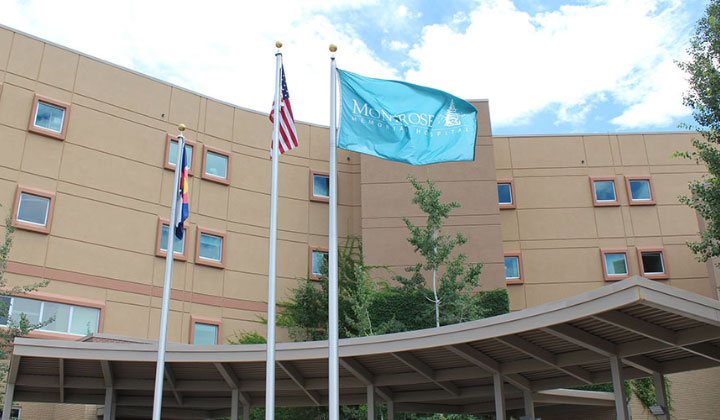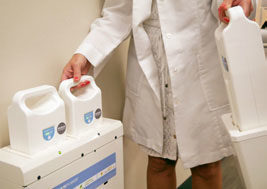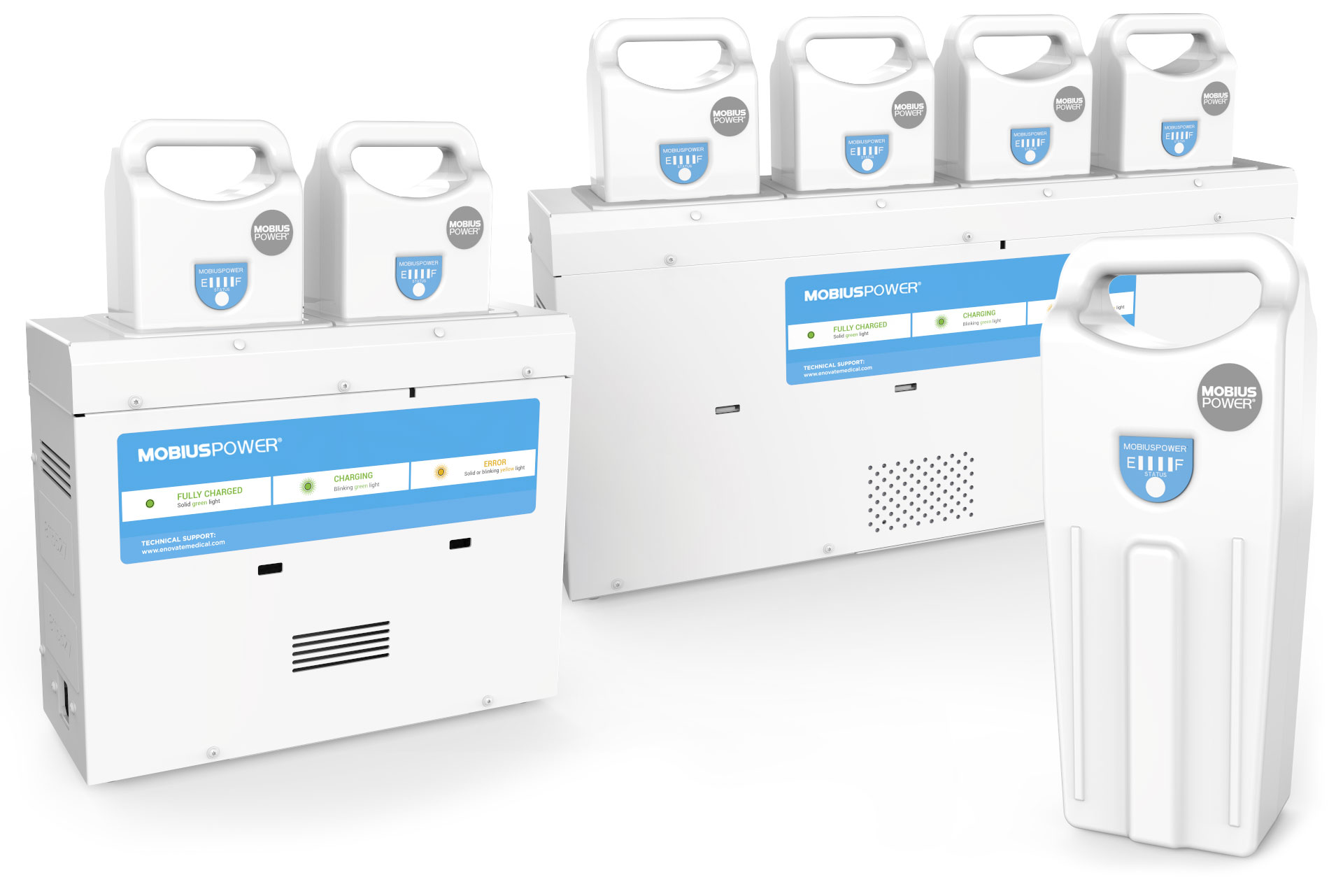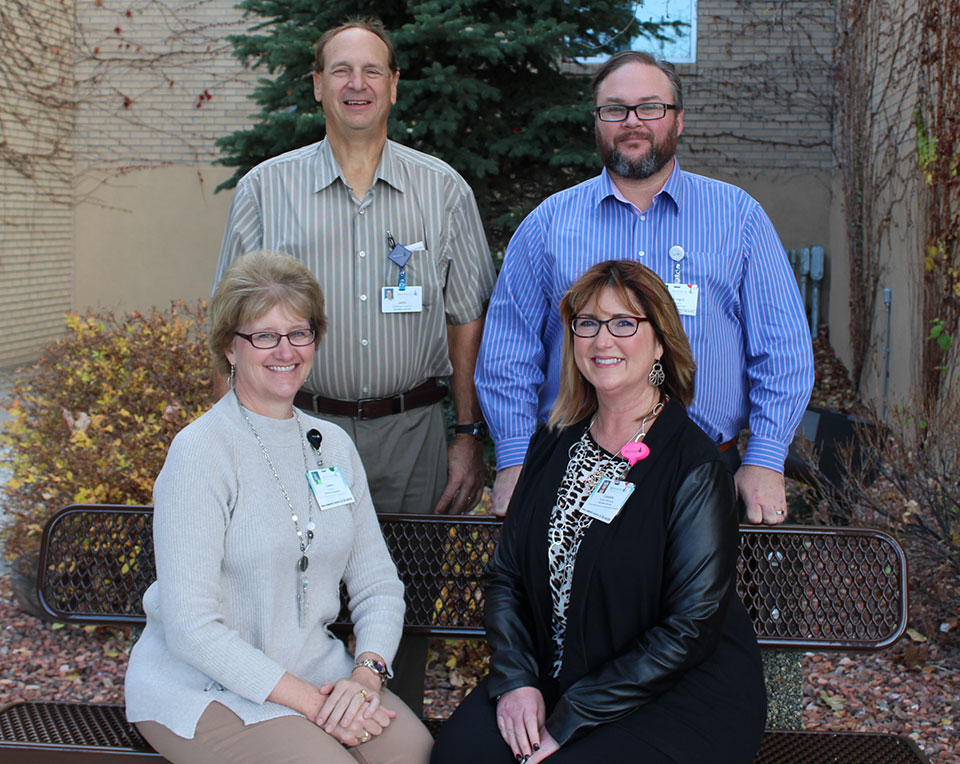
Montrose Memorial Hospital Achieves More Consistent Real-Time Charting and Streamlined Nursing Workflow After a Clinical Device Assessment and a Department and Budget-Tailored Equipment Upgrade
Advances in technology over the last decade have improved the way hospitals manage patient data. Along with the incorporation of Electronic Health Record (EHR) and mobile, ergonomic equipment comes an ever-evolving workflow, especially for nurses, the lifeblood of hospitals. Hospitals strive to incorporate cutting-edge technology and streamline processes so that patients have an improved experience. They also must face the challenge of meeting their goals without exhausting the budget.
Montrose Memorial, an award-winning 75-bed community hospital on the western slope of Colorado, recognized the value of increasing real-time charting. The hospital set a goal to enhance efficiency and empower nurses to spend more face-to-face time with patients. In regard to purchasing new clinical devices that would augment workflow, IT professionals at Montrose encountered two key issues: They had a tight budget, and they needed to determine and meet the appropriate solutions for each nursing department.
“Each one of these departments operates a little differently,” explains Eric Herd, Director of Information Technology at Montrose Memorial. “They have unique needs. There are departments that need med drawers, and there are departments that need something smaller, thinner, and lighter weight.”
Montrose Memorial Hospital called on Enovate Medical to help find the right solutions.
Solutions That Make Sense
To solve these challenges, Montrose Memorial Hospital leaned on Enovate Medical to perform a Clinical Device Assessment (CDA). The first CDA took place in 2011 with the goal of building a robust equipment fleet for Montrose that offered the right EHR workflow solutions for each nursing situation. Enovate performed a second CDA with Montrose in 2016 to process map workflow, identify nurse utilization, make necessary adjustments, and incorporate a long-term, budget-friendly plan.
“I appreciated their flexibility and their ability to provide the solutions to each department individually,” says John Zentmeyer, Technical Support Analyst II at Montrose Memorial. “They each have specific needs, and all of those needs were fulfilled with one vendor. Having a sales force that knows what the product is and what it can do was certainly a benefit in this situation.”
With a CDA, an Enovate account executive develops a relationship with the hospital and performs a comprehensive evaluation of that hospital’s overall needs and the workflow intricacies within each department. Enovate then recommends solutions that empower nurses to give their full attention to patients, as well as solutions that aid the hospital’s IT team in effectively supporting those dedicated nurses.
Marc LaFleur, Enovate Medical’s Regional Sales Director, performed both CDAs with Montrose Memorial Hospital. First, he assessed device needs based on real-scenario observations and in-depth conversations with nurses in their departments. Then he worked with the hospital’s IT professionals to help determine the best streamlined solutions. In the second CDA, LaFleur did a thorough reassessment, factoring in staffing, utilization, and expansion changes, while also observing how the nursing workflow across all departments had evolved over the five-year period between the CDAs.
“In hospitals, IT makes all these decisions, and it doesn’t always fit the actual need or the workflow for the department because we’re not clinical,” says Candice Schroeder, IS Project Manager at Montrose Memorial. “Marc was able to get buy-in from the actual nurses. Marc showed them the features, and he actually walked around with them. We don’t see a lot of vendors who do that.”
Conversely, sometimes the nurses in a department will push for a workflow change without being aware of the potential roadblocks it could create for them when it comes to caring for patients. For example, nurses in the medical-surgical unit wanted to switch from mobile workstations to wallmounted solutions. LaFleur recognized that an upgrade in mobile solutions would be a better fit. He outlined all the factors for IT regarding construction, network, and power costs associated with the wall-mounted options, and with the nurses, he walked through workflow implications. He spent time with the nurses to understand and problem-solve their concerns. The result was a nurse-centered solution.
“He didn’t convince us for the benefit of an additional sale,” Zentmeyer says. “He made some very valid arguments against going with a wall-mounted solution verses the cart solution. We were able to really effectively come up with a solution that requires less hardware and that has greater benefits to the nursing staff. It gives them a lot of flexibility.”

Nurses can swap the lightweight batteries from a holster at their fingertips to a wall-mounted charging station (and vice versa) in a matter of seconds, and they only need to swap once during a 12-hour shift.
Smart Power
LaFleur and his colleagues encouraged Montrose Memorial to adopt Enovate’s MobiusPower®, a flexible, efficient swappable battery system, for its mobile EHR workstations.
“With this refresh, our call volume on battery and cart issues has dropped significantly,” Zentmeyer says.
The deployment of the swappable batteries reduced the influx of IT tickets from nurses related to battery life, which the IT team was overloaded prior to the change. With cordless workstations and external batteries, Montrose nurses can swap out a depleted battery for a fully charged one in seconds. A battery issue never renders a cordless workstation inoperable. That ease of swapping allows the IT team to quickly replace a weak battery that’s approaching end of life or one that has malfunctioned, without doing any maintenance.
MobiusPower allows nurses to know in minutes (rather than an arbitrary percentage) how much battery life they have left on their carts, eliminating battery anxiety. “Mobius provides them 24/7 up time,” LaFleur says. “Nurses always have on-demand power, and on-demand power promotes more real-time charting at the bedside.”
Nurses can swap the lightweight batteries from a holster at their fingertips to a wall-mounted charging station (and vice versa) in a matter of seconds, and they only need to swap once during a 12-hour shift. MobiusPower is a cordless solution that eliminates the many hassles, safety concerns, and workflow hindrances of workstations that must be plugged in to charge. Enovate mobile power solutions support and sustain workflow improvements.
“The flexibility of the MobiusPower solutions and the configuration are a real big plus for us,” Herd says.
MobiusPower automatically receives firmware updates, eliminating the need for costly equipment purchases. Enovate does not overhaul the system’s physical design. “It’s not a situation where we’re upgrading batteries and then having to upgrade all the chargers and all the holsters in the units,” Zentmeyer says. He also likes the fact that, even though different departments have different workflow needs and equipment, Montrose was able to unify the utilization of Enovate’s MobiusPower throughout its facility.

MobiusPower is a cordless solution that eliminates the many hassles, safety concerns, and workflow hindrances of workstations that must be plugged in to charge.
Long-Term Budgeting
After the second CDA, the IT team at Montrose Memorial Hospital was eager to implement LaFleur’s recommendations by purchasing and deploying new EHR workstations with MobiusPower, but budget was a big concern. LaFleur suggested a lease agreement through a third-party provider of technology financing.
“The capital expenditure on a project is one of the first things that my bosses look at,” Herd says. “So the ability to lease and take that through my capital budget and put it into my operating budget really smoothed that process over. It was an easy sell.”
Montrose obtained a customized four-year lease through Winthrop that coincides with the hospital’s equipment warranties. Now, after four years, Montrose will have the option to refresh its fleet or do a buyout.
“There are a couple of advantages to a lease,” Herd explains. “Money, obviously is the big one, not having that capital out there. The investment is huge. It doesn’t break the bank, and it allows us to spread those payments over time. The other big one is that it puts us on a schedule.”
The leasing schedule ensures that Montrose never has out-of warranty equipment, a situation that creates the need to manage assets over several years with parts replacement, preventative maintenance, and workflow adjustments. Enovate’s goal is to absorb that planning burden with a new CDA toward the last year of a lease or warranty cycle.
“We are proactive with our customers,” LaFleur says. “If you have a four-year warranty, and a four-year lease, we’ll start having some conversations at three years for the next year, so you’re never in a situation where you’re dealing with outdated technology.”
The IT pros at Montrose are thrilled with this new way to track and manage workstation and battery roll-out. “At the end of the lease, we turn these in, and shiny new ones arrive,” Herd says. “The schedule keeps everyone happy.”
Results
The nurses at Montrose Memorial are ecstatic about their new equipment, which helps them spend less time dealing with tech logistics, eliminates battery anxiety, and helps them achieve more face-to-face time with the patients.
“The ability to roll a workstation up into a triage room and be able to document with the patient in real time is big,” Herd says. “In the emergency department, we enhanced workflow quite a bit just by helping them not have to walk around as much.”
Montrose prides itself on emergency preparedness. The CDA and new equipment rollout, complete with MobiusPower, has boosted the hospital’s capabilities to handle mass casualty events. In those situations, a large influx of patients would require temporary waiting and admissions areas.
“The ability to deploy workstations in a temporary area is part of that emergency preparedness plan,” Herd says. “Before, we actually had laptops sitting on a cart. I don’t think we ever looked at them. They were ancient. With the new equipment, we can roll them up anywhere in the hospital.”
The changes have also made life easier for Montrose’s IT team. “The answer is unanimous,” Zentmeyer says. “We like the new system a lot better.” Schroeder agrees, citing the lower number of complaints.
The lease option made the changes feasible so that Montrose could reap the benefits of the new equipment and enhanced workflow right away, rather than waiting for more capital. “The folks at Winthrop were amazing,” Herd says. “For years, our business model was not to lease but to buy. Marc and the guys at Winthrop really had high-level meetings with the CFO and with our accounting team and made us feel very comfortable about the option of a lease.”
Montrose and Enovate now have an ongoing relationship. LaFleur and his colleagues remain in touch and involved with Montrose’s workflow evolution. “They are well apprised of the needs that we might have and help us better assimilate what our needs are,” Schroeder says. “They know us very well.”
Better equipment, improved processes, happier nurses, and an ecstatic IT team all enhance the best patient care in the Rockies.

PICTURED (CLOCKWISE FROM TOP LEFT): John Zentmeyer, Technical Support Analyst II; Eric Herd, Director of IT; Candice Schroeder, IS Project Manager; Leann Tobin, Community Engagement Director

